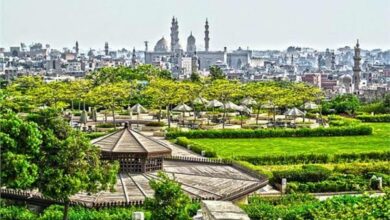Close to the heart of Cairo, the northern suburb of Shubra has always been known as its own country.
The liveliest street in this country is Khlousy.
Khlousy is known as the street that never sleeps. Seemingly the most crowded street in Shubra, it is sometimes dubbed the “Shanzelize” of Egypt.
A commercial street, Khlousy is known for high class women's clothes shops, and a few men's ones. No wonder it is crowded all day and all night.
Many shops and buildings are called Al-Amir here.
Al-Amir shopping mall is the large building in the middle of the street. It recently replaced the old and famous Al-Amir cinema. In the mall there is still a small cinema where new releases can be seen at reasonable prices.
Street vendors occupy both sides of the street. Although sometimes annoying, you can’t help finding yourself checking their miscellaneous goods and buying some, even if you don’t really need them. Since the 25 January revolution the number of street vendors has grown here.
Photography shops have been based in Khlousy for a long time. Brides and grooms come from different areas of the suburb to get their wedding pictures. If it's especially interesting, their picture might be posted on the shopfront to attract other clients. Some fascinating photos are already posted for people to look at.
Oriental cafes occupy a large amount of the right side of the street, where men enjoy tea-drinking and shisha-smoking while watching football matches. Interestingly, they all seem to be Ahly fans; if they win the whole street turns into a festival but if their rival Zamalek wins you don’t hear a sound.
Khlousy, like all Shubra, is still famous for the religious diversity it embraces. The Eid prayer and church bells ringing for Coptic feasts are two common and well-loved sounds in the street.
When the holy month of Ramadan comes, followed by the feast, you feel the happiness and spirituality of the people. It is a delightful experience to eat some tasty koshary at Al-Amir during feasts.
Shubra was a resort for princes and the upper classes in Egypt in the days of Mohamed Ali Pasha. The founder of modern Egypt chose Shubra as a remote location to build a palace to relax in. The road to the palace was Shubra Street.
Shubra Street remained an exquisite pathway decorated with splendid trees until the reign of Khedive Ismail. On the opening of the Suez Canal in 1869 he uprooted some of the trees and re-planted them in another road.
Over the years Shubra expanded and split into many streets. Yet Shubra Street remained the main spine from which the expansion and construction took place. All new streets are parallel to or horizontally intersect with it.
Kholousy, now the most crowded street for its shops and malls, intersects with the Shubra Street. At one end of Khlousy is Ter'a Bolakeya Street (Bolakeya Canal Street), parallel to Shubra Street.
Now a main street, it was labeled on the canal that was dug in the reign of Mohamed Ali to irrigate the outskirts of Cairo. The canal stretched from the Nile in Tahrir, through Abdul Moneim Riad square and Galaa Street reaching Shubra.
On its other end, the famous "Dawaran Shubra” (Shubra’s rotation) cuts Khlousy from its extension, Rood Al-Farag Street.
Rood El Farag Street was known for its casinos and entertainment venues.
It was also a large and famous market for vegetables, fruits, and other grains. The events of the famous film "Al Fetewa", starring Zaki Rostom and Farid Shawki, took place in that market.
The easiest way to pay Khlousy a visit is by using the underground line 2 (Shubra-Giza) which has stops in successive streets of Shubra. The closest stop is Rood al-Farag, from which you can start your trip in Khlousy from the Dawaran.



